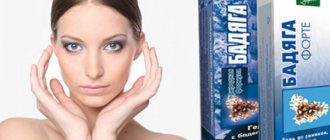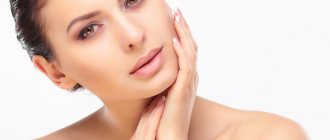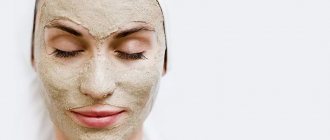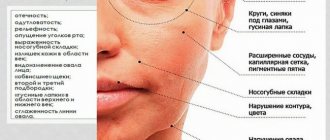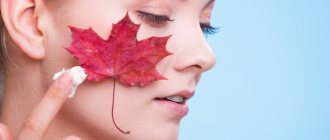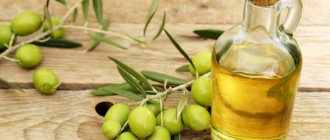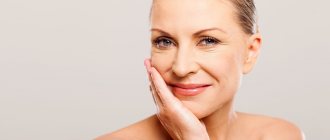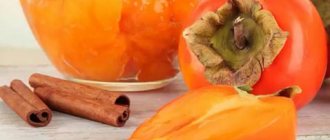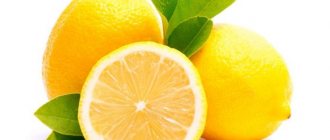Unpleasant rashes, acne, redness and inflammation - all these factors poison the life of any girl. Natural beauty is lost against the background of acne and blackheads. Almost any skin type is prone to inflammatory processes.
Dry skin and sensitive skin can become inflamed if the wrong skin care products are selected.
Oily and combination skin becomes inflamed due to excess subcutaneous sebum, which clogs and contaminates the pores.
To find out the true causes of skin inflammation, it is advisable to consult a dermatologist.
Without knowing the causes of inflammation, getting rid of such a disease on your own is a rather difficult task. Expensive cosmetics, folk methods and homemade masks can reduce these processes. And with minor inflammation, you can completely get rid of this unpleasant scourge.
Possible causes of inflammation
The most common causes of inflammation of the skin of the face include:
Allergic reactions to:
- medications;
- preservatives;
- ultraviolet radiation;
- cosmetics;
- pets;
- flowering plants;
- household chemicals.
Hormonal imbalance in the body, which can occur due to:
- pregnancy;
- transition period (adolescence);
- with long-term use of hormonal drugs.
Weakening of the immune system due to:
- frequent illnesses and colds;
- hypothermia of the body.
Improper organization of the diet, in which the following products predominate:
- sweet, flour, fried;
- spicy, smoked, salted.
- Insufficient intake of vitamins and multivitamins.
Heredity and predisposition to:
- eczema;
- psoriasis;
- acne.
Emotional instability:
- stress;
- anxiety;
- prolonged depression.
Bad habits and unhealthy lifestyle:
- smoking;
- excessive consumption of alcoholic beverages.
Skin infection:
- bacteria;
- viruses;
- microbes
Methods for treating inflammation on the skin of the face
- 1. Drug treatment, which includes treatment:
- brewer's yeast;
— activated carbon;
- antibiotics.
- 2. Cosmetic procedures:
— ultrasonic facial cleansing;
— peeling;
— laser cleaning;
— ozone therapy.
- 3. Traditional methods of treatment:
— homemade masks;
- lotions;
- tinctures.
Benefits of an anti-inflammatory face mask
Every woman can prepare therapeutic masks at home from products that have a disinfectant and antibacterial effect. Due to their naturalness, they are harmless and have a good effect on skin rashes.
Anti-inflammatory face masks help cope with various skin problems - redness, irritation, pimples, acne, etc.
With regular and competent use of masks, a woman will achieve good results in the shortest possible time:
- the most important thing is that the skin is saturated with nutrients and vitamins, which is important in a modern balanced human diet;
- the top layer of skin is moisturized, collagen production is increased and facial skin elasticity is improved;
- pimples that appeared earlier begin to dry out;
- no scars will appear on the face after eliminating acne;
- new pimples will appear on the face with less intensity;
- the area with acne will significantly decrease and gradually disappear;
- The redness of the skin will go away.
When preparing mixtures at home, inexpensive ingredients are usually used; a lot of time and financial investments are not required. But positive results will appear only with regular two-week production and use of anti-inflammatory face masks.
It should be taken into account that problematic manifestations on the face give a signal to the sick person about the presence of internal problems that need to be clarified and treated. Therefore, the effectiveness of masks without identifying the cause and its solution will be short-lived.
It is also necessary to know from what components such masks can be prepared.
Perioral dermatitis
Perioral dermatitis is a macular erythema with very small papulopustules affecting the periocular and perioral skin of young women (with preservation of the red border of the lips). It can be either idiopathic or caused by the use of cosmetics or topical corticosteroids directly or indirectly (via fingers applying the product to another area of the skin). Wearing a mask may predispose to the development of perioral dermatitis for reasons similar to those listed for atopic and seborrheic dermatitis. Treatment includes stopping the use of creams and simplifying skin care. In milder cases, topical antibiotics such as erythromycin are sufficient, but a four-week course of tetracycline—for example, 408 mg of lymecycline once daily—is often required.
Indications for use of the mask
To find out the exact cause of inflammation on the face, it is better to consult a good doctor. But every woman will be able to relieve inflammation on her own in a critical situation or even cure it completely.
One of the indications for using an anti-inflammatory mask is skin redness.
Indications for the use of masks are:
- redness of some areas of the facial skin;
- rash or pimples;
- oily skin on the face;
- enlarged pores on the skin.
With the listed symptoms, a woman should immediately begin to take measures to eliminate them.
What effect do calming masks have?
The skin of our face very often has to suffer not only from an incorrect lifestyle and care errors, but also from the environment. Irritation, minor rashes and redness - all this is rewarded by the dissatisfied epidermis, requiring more attention. And especially care in the form of soothing masks, a must-have for women with sensitive skin.
Such masks are famous for their many beneficial properties for our epidermis:
- help get rid of minor redness and even pimples - soothing face masks have an anti-inflammatory effect;
- eliminate skin tightness, itching and flaking;
- provide the effect of moisturizing and nourishing the epidermis;
- improve metabolic processes in the skin and stimulate local blood circulation;
- quickly restore the skin after cosmetic procedures (for example, chemical peeling or mechanical cleansing);
- even out complexion;
- lighten age spots.
Soothing potato mask
Interesting: How to tighten the pores on your face
Possible causes of inflammation on the face
Of course, first you need to clarify the cause of the pimples. Let's consider these reasons:
1. In modern conditions associated with environmental problems and poor nutrition, the skin of the face urgently needs constant and very careful care : cleansing the face twice a day from bacteria, dust, sweat and sebum, and dead skin particles.
To avoid clogging of pores and subsequent inflammation, you need to regularly care for your skin, in particular, clean it of impurities.
If a woman does not have time to do this, then the sebaceous glands become clogged and plugs appear, which is the cause of acne.
2. A very common reason is adolescence and the period of hormonal maturation of girls. The manifestation of such processes is the overly active growth of the sebaceous glands, which causes the formation of teenage pimples.
Homemade face masks will have an effective anti-inflammatory effect in such a situation.
Another common cause of inflammation is hormonal changes in the body in adolescents.
3. There are individual characteristics of the skin , for example, the sun's rays can cause dry skin in one person, and increased sebum production in another (then it would be optimal to use sunscreen for the face).
4. And finally, the food a person eats has a very important influence on the condition of the skin .
The food we eat often shows up on our skin
Fatty, fried, spicy, sweet foods, and excessive coffee consumption most often cause skin problems and disorders. If you have such problems, you should not drink alcohol at all.
By following the rules of a healthy lifestyle, you can completely avoid the appearance of acne and pimples on the skin or at least reduce their number.
Tips for use
The effectiveness of the fight against inflammation on the face depends on the literacy of daily care. To eliminate acne and prevent relapses of acne, you need to follow the following rules:
- Preparing for the procedure. First, the facial skin is cleansed of impurities, sebum and pathogenic microorganisms. To do this, wash with hypoallergenic foam or gel. If acne worsens, do not use scrubs. As an alternative, make a mask with white or blue clay 2 times a week.
- Applying homemade cosmetics. Apply the mixture with a brush or clean hands. When the mask is already applied, they try not to talk. Keep it for 10 to 30 minutes, after which it is removed with warm water. Masks are done every day after waking up or before going to bed. The duration of the course is from 1 to 4 weeks. For inflammation, it is better to use decoctions of anti-inflammatory herbs - chamomile, echinacea, oak bark, dandelion roots, licorice, rose hips.
- Care after the mask. To replenish the lack of moisture, use cream at the final stage. For problem skin, hypoallergenic cosmetics with anti-inflammatory components are recommended - juniper extract, aloe vera, panthenol, rosemary essential oil.
Particular attention is paid to the choice of face creams. When purchasing cosmetics, consider not only your skin type, but also other factors. For example, sun exposure can cause overactive sebaceous glands, irritation, or dryness. To prevent dermatological problems, use creams with SPF protection in hot sunny weather.
Homemade masks, their pros and cons
Advantages (pros) of homemade masks:
- the effectiveness is almost the same as that of professional masks, but it most often depends on the correct selection of ingredients and skin type (the presence of specific problems from a dermatological point of view also plays a role);
- low price of the main components, most of which (honey, vegetables, herbs, fruits, dairy products, medicinal herbs) are always in the house, and what is missing can be bought at the pharmacy;
A significant advantage of homemade masks is their naturalness, since they are prepared on the basis of natural ingredients
- masks prepared with your own hands do not have any synthetic additives (dyes, preservatives) and are therefore safe for humans (the exception is individual intolerance to any component);
- to prepare masks, you can use many different products, which you can approach creatively and choose your own new mixture of ingredients that optimally affects specific facial skin;
- when preparing a mask on her own, a woman is always more confident in its composition and effectiveness than when applying a purchased ready-made mask (it is not yet known how such an experiment will end);
- If you wish, you can change the composition of your homemade mask at least every day.
Cons of homemade masks:
— making a mask at home will take a little time, though;
— when mixing ingredients in mixtures, it is better to check each of them for an allergic reaction of the human body;
— masks prepared at home cannot be stored for a long time, even in the refrigerator, so they are prepared for one procedure.
Having looked at the list above, we can state that homemade masks have many more advantages.
Acne (acne)
Acne vulgaris (Fig. 4) is a chronic inflammatory disease of the skin and hair. PPE-associated acne, which can be considered a subtype of mechanical acne, occurs both in people with a history of acne and in those who have not previously suffered from acne. This type of rash is associated with wearing surgical masks and N95 respirators. The pathogenesis of PPE-associated acne is thought to have three key aspects:
- Creating a humid microclimate inside the mask.
- The mucous membrane can become colonized with bacteria, which increases the bacterial load on the surrounding skin.
- The frictional effect of a tight-fitting mask can damage the opening of the follicles, causing irritation, the detrimental effect of which is aggravated by high temperature and humidity.
Retinoids, such as adapalene gel cream, alone or in combination with benzoyl peroxide cream once daily, may be used in mild cases. For moderate to severe rashes, an oral tetracycline such as lymecycline 408 mg once daily for 12 weeks can be added to the treatment regimen.
Figure 4. Acne
How to apply it to your face correctly
Before starting the mask application procedure, you should hide your hair so as not to interfere, prepare a thick brush and cotton wool pads.
To apply the mask you will need a brush and cotton pads.
Then you need to decide on the time of day when it is best to apply the mask. At different times of the day, there are several periods of time that may or may not be recommended for applying a mask.
Morning time (8-10) is a period of increased blood circulation and restoration of the human body’s immune defense, therefore it is considered the ideal time for cosmetic procedures.
But the period from 11 to 18 is considered not very favorable - the skin does not accept drugs. Finally, the interval 18-23 pm is a good period for using cleansing procedures by activating the regeneration process of skin cells.
It must be taken into account that there are areas on the face where a mask is never applied - these are the areas around the eyes and lips.
Various face masks, including anti-inflammatory ones, are applied using special tools that must be prepared at home in advance: brushes (for a greasy mask) or wooden spatulas (for a thick mass), sponges (for a creamy mask).
After applying the mask, you need to lie down and relax your facial muscles.
There are rules of conduct during and after a cosmetic procedure:
- when the mask has already been applied, it is better to lie down, close your eyes and try to achieve complete relaxation while listening to pleasant music;
— it is recommended to remove the remnants of the mask with water or warm herbal tincture;
- you don’t need to wipe your face, but let it dry and absorb moisture;
- then, to improve blood circulation and narrow the skin pores, it is recommended to wipe your face with pieces of ice prepared in advance.
Understanding the problem: the key to the solution
Various conditions can cause irritated, red skin to appear on the face. We are not talking about a light blush that appears on the cheeks after jogging in the park, walking through frosty snow-covered areas of the city, or romantic confessions from a loved one that embarrass you.
The pathological condition of facial redness is a dermatological problem, the culprits of which are the following factors:
- allergic dermatitis;
- sunburn;
- loss of the ability of skin cells to retain moisture;
- side effects of deep salon peelings and cleansing;
- eczema, etc.
Red skin is not just a matter of aesthetics. The face may become covered with uneven, bumpy areas, itchy and flaky. Such defects are difficult to hide with concealers, powders and correctors. But some home remedies do not mask imperfections, but eliminate them. You can try excellent masks that are made from ingredients found in every home.
The best gifts you need:
|
Homemade mask recipes
When a woman plans to make anti-inflammatory face masks at home, she will first look through her supplies to see if she has any suitable products or herbs.
Certain foods have an anti-inflammatory effect (seaweed, ginger and turmeric roots, green tea, olive or avocado oil), as well as all types of vegetable oils, corn and oatmeal; tomatoes (give an exfoliating effect), cranberry juice and citrus fruits.
Clay-based masks
1. Mix pink clay (3 tsp) with 3 tsp. Calendula decoction, drop in tea tree oil (2-3 drops).
2. Mix blue clay (1 tbsp.) with 1 tsp. decoction of calendula and lemon lemon, dilute a little with water.
Masks based on blue clay help cope with inflammation and oily skin
With aspirin
1 tbsp. l. mix flower honey with 1 tsp. jojoba oil and 1 tsp. water, heat in a water bath. Before use, add 4 crushed aspirin tablets to the mixture.
Cleansing with soda
Baking soda is mixed with the washing gel in equal proportions.
Baking soda will cleanse the dermis and eliminate excess oiliness
Honey-egg
Mix thick honey (1 tbsp) with a freshly beaten chicken egg. This mixture cleanses well and gives an antiseptic effect.
Honey with added aloe
Grind the aloe leaves with a knife and mix with 1 tsp. flower honey. Then apply the prepared mass on your face for 20 minutes, this is done weekly, but not more often.
Honey has nutritional properties, and aloe has cleansing and antibacterial properties
Nettle with plantain
Grind and mix nettle and plantain leaves, then add a few drops of lemon juice. The mass is applied for 15 minutes.
Cucumber
Pour boiling water (3 tablespoons) over grated fresh cucumber, leave for 15-20 minutes, then squeeze out the mixture, apply the mixture to the skin and hold for 15 minutes.
Cucumber mask is famous for its cleansing and toning effect.
Chamomile
Brew chamomile (herbs and flowers) with boiling water and stir until thick, cool and can be applied to the face. Chamomile has an antimicrobial and disinfectant effect.
Potato
Peel and grate the potatoes as finely as possible, squeeze out the juice through cheesecloth. Add flour (buckwheat, rye, oatmeal) until the mixture becomes mushy.
Apply the potato mixture for 15-20 minutes. It is better to rinse off with cool water.
Potatoes dry out too oily epidermis
Fruity
Mash fresh strawberries (3 tablespoons). Add grapefruit juice (2 tsp). Beat 1 chicken egg. Mix all ingredients.
Masks to relieve skin redness
Homemade masks help give your face an even color. They relieve redness, remove peeling and traces left behind by acne. The use of masks improves blood circulation and soothes irritated skin.
To achieve the desired result, it is better to apply them for at least 25 minutes, then just wipe off the remaining product with a cotton swab. It is better to wash off your face after completing the procedure with warm water. A sharp jump in water temperature can also irritate the skin and give it a reddish tint. It is recommended to use masks for at least 14 days so that the effect is noticeable as quickly as possible.
Recipes:
A mask made from oat flakes. It is enough to fill them with hot water in the amount of 6 tablespoons. For the indicated amount of liquid you will need 2 tablespoons of flakes. The mask should sit for a third of an hour, then it should be stirred. It is better to apply the mixture in a thick layer on the face. Kefir-curd mask. The mixture is prepared according to the following recipe: high-fat cottage cheese in the amount of two tablespoons is poured with kefir and mixed thoroughly. The consistency should ultimately be like a cream. Instead of kefir, it is better to use liquid sour cream if your skin type is dry or redness is the result of peeling. Curd and carrot mask. Vitamins A and E that the skin needs are contained in carrots, but to absorb them, it is better to make a mask with the addition of fatty cottage cheese. It is better to chop the vegetable first; you can use a grater. The mixture should be homogeneous. Cucumber. The vegetable is finely grated and applied to the face. To achieve a refreshing effect, you can add pre-chopped zucchini to the cucumbers. Many people put sliced cucumber on their face. The disadvantage of this scheme is the smaller coverage area, since it will not be possible to cover the entire skin with vegetable rings. Potato mask. The vegetable can be used boiled or raw. The potatoes should be grated and the juice squeezed out of the resulting mass. If you have dry skin, you can add olive oil to the mask. Banana. The mask is easy to apply and keep on your face. The banana should be reduced to a pulp; just mash it with cutlery. The main thing is that he is mature. A yeast-based mask suitable for any skin type. Yeast in an amount of 20 grams is diluted with warm milk
It is important to achieve the consistency of the mixture, like sour cream. During use by patients with oily skin, you can add a drop of lemon juice.
For dry skin types, it is recommended to apply a mask with the addition of cosmetic oil or olive oil. In the absence of these ingredients, you can take cucumber juice, which has a whitening effect. Masks applied through fabric. For the procedure, you will need a piece of gauze folded in 2 or 3 layers, which must be soaked in herbal or green tea or cabbage juice. Chamomile or calendula works well. The mask should be applied for half an hour. After this time, your face should be rinsed with warm water. Sour cream mask with honey. Honey contains many vitamins and beneficial microelements, and sour cream is effective in removing redness from dry, flaky skin. Egg and aloe mask. The mixture perfectly eliminates inflammation and relieves redness. The mask, thanks to the egg included in its composition, closes the pores that appear as a result of redness.
Having a constantly healthy complexion and forever forgetting about the problem of redness of the skin helps to control your health, get good sleep, eat right and use high-quality cosmetics.
Special masks for teenagers
Teenage girls often face the problem of acne, and boys even more often. Anti-inflammatory face masks at home for a teenager can be prepared as follows:
1. Pre-clean the skin. Beat the egg white until foam appears and place in layers on your face as it dries for 15 minutes. Then rinse everything off with warm water.
An egg white mask is recommended for eliminating teenage skin problems, namely acne.
2. When a girl’s skin is dry, it is recommended to make a mask of flower honey (1 tsp), egg white with the addition of 1 tsp. oil (preferably olive oil). Everything is mixed and for 15 minutes. applied to areas with pimples, it is better to rinse with a mixture of water and milk (1:1) or warm water.
3. A white clay mask is ideal for treating teenage acne. Mix clay and warm milk (2 tsp each), add 1 tsp. talc.
How to Avoid Maskne
Mask where necessary.
If you are outdoors and not in contact with people, take off your mask and let your skin breathe.
Changing masks.
The mask is saturated with moisture in about 20 minutes, after which it should be replaced with a new one. But before that, let the skin “air out”. Reusable masks should be washed and ironed after each use.
The right materials.
Choose masks made from 100% cotton.
It should fit well and not rub or irritate the skin. A-NOX Hydratant Cream
Moisturizing cream for oily and problem skin
Program Skin Accumax
Bioactive complex for problem skin
Acne Therapy Lotion
Preventing acne with alcohol-free lotion
Masks that cleanse pores
Cleansing masks prepared at home are designed not only to cleanse the face, but to moisturize, refresh, nourish, or, conversely, dry the skin. Before use, the skin should be cleaned as much as possible using a steam bath or a regular hot compress.
Here are the most popular recipes:
1. With clay. Water is added to the clay powder and stirred until a medium-thick mass is obtained. Apply it to the face for 10 minutes, then wash it off and moisturize the skin with daily cream.
Depending on the type of skin, the necessary types of clay are selected (white, blue - used for oily skin; pink - for normal skin; red - for dry skin).
Red clay is suitable for cleansing the pores of dry skin.
2. With flour (different types are used - oatmeal, wheat, etc.). Diluted 1 tbsp. l. flour in water, stir until creamy. Apply on the face for 15-20 minutes, rinse off with cool water.
When the skin is dry, you can add olive oil or sour cream to this mixture; when the skin is oily, add kefir, cucumber, tomato or lemon juice.
3. With oatmeal. 1 tbsp. A spoonful of oatmeal is brewed with boiling water or boiling milk. Additionally add 1 tsp. lemon juice or egg white if your skin is oily. The cooled pulp is applied in a fairly thick layer to the face for 15-20 minutes.
An oatmeal mask will help moisturize and saturate the skin with nutrients.
4. Herbal masks. The following herbs are usually recommended: for dry skin - chamomile, linden, mint, rose hips and rose petals; for oily women - calendula, sage, horsetail, yarrow, coltsfoot.
To prepare, dry plants or a mixture of them are ground to a flour-like state. 2 tbsp. spoons of herbal flour brew 1/2 tbsp. boiling water, stand for 15 minutes, filter, and apply the herbal porridge to the face for 15 minutes. (sometimes it is more convenient to put the porridge on gauze, which is then applied to the face).
Operating principle
The main secret of the positive effect of masks on the skin is that their active components have a productive effect on problem areas of the epidermis. They must have antiseptic and anti-inflammatory properties, and also contain natural products (aloe, honey, algae, etc.)
Anti-inflammatory masks can also have a complex effect. That is, not only to rid the skin of problematic defects, but also to nourish it, moisturize, tighten, nourish, cleanse, etc., depending on the set of components.
Rosacea
Rosacea (Figure 5) typically affects adults aged 30–50 years with fair skin. Typically, patients experience facial erythema and telangiectasia on the convex parts of the face (chin, cheeks, nose, forehead). The classic zone of rosacea distribution coincides with the area in contact with the mask when it is worn correctly. The chronic course and presence of telangiectasia usually helps to distinguish rosacea from perioral dermatitis. Rosacea can be caused or worsened by wearing a mask for long periods of time. Drug treatment includes topical agents such as 1% ivermectin cream once daily for mild cases. An oral tetracycline, such as moderate-release doxycycline 40 mg once daily for 8 to 12 weeks, can be added to the regimen for moderate to severe cases of the disease.

